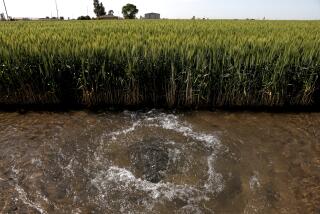Editorial: Protecting all of California’s water
Rivers and streams in California and much of the rest of the West are different from those in other parts of the nation. It’s not uncommon for streams here to swell with winter rain and spring snowmelt but dry up completely in the summer. The Los Angeles River is a good example. Even in the wetter northern part of the state, watercourses that continue to flow in summer are so rare that when Spanish explorers found one in what is now Santa Clara County, they named it Permanente Creek to spotlight its perennial nature. In California, intermittent streams are the norm.
The federal Clean Water Act, adopted in 1972, was long interpreted by the Environmental Protection Agency as providing California-style streams the same protection from polluters as their East Coast counterparts. That stands to reason, because streams that dry up in summer flow the rest of the year into the rivers, streams, lakes and aquifers that are the primary water supply sources for millions of residents.
But a pair of Supreme Court rulings handed down in the last decade and a half have muddied the waters by finding some EPA interpretations overly broad, while failing to offer clear guidance on how the agency should proceed. Now the EPA, with the help of the Army Corps of Engineers, has proposed a rule that clarifies the protections that are so important for California. Would-be polluters and some members of Congress who support them are balking. The rule deserves support against their attack.
In Los Angeles and San Diego counties alone, 1.4 million residents get their drinking water from sources that are protected by the new rule but would be vulnerable to pollution without it. That number could rise much higher as the drought continues. Streams that once continued trickling through summertime are now drying up and becoming intermittent. Under interpretations urged by some industries, those streams would no longer be protected, even in winter when they are full.
In addition, California’s groundwater is recharged by intermittent and ephemeral streams and is clean and ready for use — or tainted and useless without costly cleanup — depending on the quality of the water that seeps into it. That groundwater accounts for 40% of the state’s water supply during years of normal precipitation, and even more during drought.
As all water becomes more scarce, it is crucial to protect the quality of what is left. The EPA’s clean water rule does that. It deserves support.
Follow the Opinion section on Twitter @latimesopinion and Facebook
More to Read
A cure for the common opinion
Get thought-provoking perspectives with our weekly newsletter.
You may occasionally receive promotional content from the Los Angeles Times.










